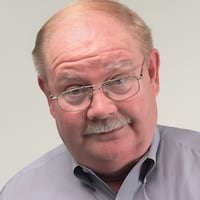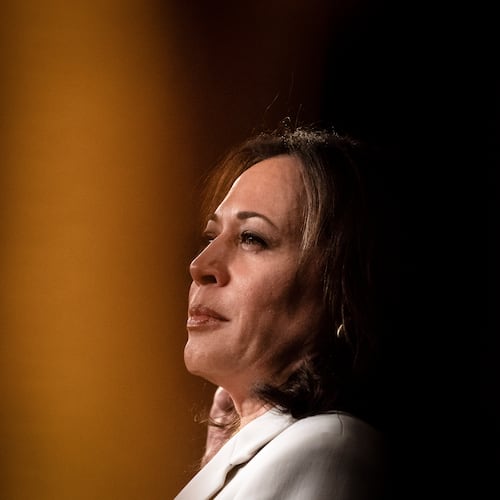Whoever takes the oath of office as president of the United States on Jan. 20 will become the leader of a nation that is likely to be even more polarized than we are now.
And yet he will immediately be faced with a dilemma that — morally, politically, and logistically — will be as delicate as any chief executive has had to wrestle with in decades:
When we have a vaccine to end this pandemic, if we have a vaccine, who will get the first doses of protection? Who will be next in line — and next after that? And who will be required to wait at the end?
Last Friday, in the hours before an infected Donald Trump boarded Marine One for a helicopter ride to Walter Reed Military Medical Center, a panel of 18 scientific and public policy experts published a 237-page outline of how this might be done.
Much emphasis was placed on avoiding this country’s many political and racial fault lines. In that and a few other ways, it is a very Atlanta sort of document.
“The logistics are going to be horrendous. The first two of the four vaccines that will probably come out have to be kept cold at minus 80 degrees centigrade. That’s more than minus 100 degrees Fahrenheit. There aren’t many places equipped to keep something that cold,” said Dr. William Foege, one of the co-chairs of that committee. “It’s not something you can do at pharmacies or immunization clinics.”
It was Monday morning, and Foege was with us on GPB’s “Political Rewind.” Foege and host Bill Nigut are longtime friends, which gave us early access to the man who contributed greatly to the eradication of smallpox in the 1970s. President Jimmy Carter named Foege head of the Centers for Disease Control and Prevention in 1977, where he served six years. Foege still lives on Atlanta’s north side.
The panel’s other co-chair is Helene Gayle, the former president and CEO of Atlanta-based CARE, the world humanitarian organization. She’s in Chicago now, but like Foege, also has a CDC background.
The plan was ordered up by the CDC and National Institutes of Health, and executed under the auspices of the National Academy of Sciences — all institutions that remain the scientific giants of our federal government, though of diminished standing in the current administration.
Disciples of science may not be politicians, but they do know how to make their points, politely, about a national pandemic policy that has been anything but successful. In opening lines, the authors express hope that a successful distribution effort will serve as “a springboard to resuming our place as a leader in global health.”
The basics: The panel recommended that the vaccine be offered free to all comers (taxpayers are paying much of the development costs) and distributed in “phases” rather than according to “tiers” — to avoid any insinuation of social hierarchy.
“Then we make a distinction between race and racism,” Foege said. “I think people expected us to say, because this disease hurts minorities more than the majorities, that we would put [minorities] first in line.”
Politically, that would be untenable in the current climate.
“Instead, what we said was, this virus does not recognize skin color at all. But it sure does recognize vulnerabilities — and so let vulnerabilities be the reason we put people in line first,” Foege said.
Vulnerabilities can be age, as with President Trump. Or social and professional conditions — essential workers who interact with the public or must use public transportation or live in multi-generational homes.
In Phase One, at the front of the line would be first responders and “high-risk health workers.” The emergency room surgeon would be vaccinated, but so would the nurses, physician assistants, and janitors who work there.
Nursing home workers would be placed just ahead of the residents they care for. “You save more lives, if you have a shortage of vaccine, by vaccinating the workers at nursing homes rather than the residents. The reason is many of these workers work at more than one place,” Foege said. “They have two jobs. They go from one place to another, and they become the spreaders then.”
Phase Two would tap K-12 teachers and daycare workers, shelters for the homeless, group homes for the disabled, and the inmates and staff in prisons and jails. The virus thrives in places where there is little or no room for social distancing.
Phase Three would target young adults and children, considered less vulnerable to COVID-19. Finally, “Phase Four includes everyone residing in the United States who did not have access to the vaccine in prior phases.”
That last sentence would cover procrastinators and skeptics. Foege and his colleagues understand that reaching those African Americans who remember that dreadful Tuskegee syphilis study will be a challenge. New Age unbelievers in vaccines could be a problem, too.
But “everyone residing in the United States” also wraps in millions of undocumented workers who are currently shut out of much of the nation’s health care system. Foege’s smallpox experience taught him that you can’t ignore any corner where the virus might live.
“This goes from being a scientific problem to being a social problem,” he admitted. And a political one, too.
When combatting a pandemic — with a vaccine or without, trust, transparency, and political will are the major ingredients. And Foege sees a dearth of all three.
“There’s always been political pressure on CDC,” he said. "But we’ve never seen anything like the political pressure of today. And it hurts me greatly to see what has happened to public health because of that. It just does not make sense that people make decisions that are actually harming the public.
“I think for the last year or two, the White House has had problems hiring the best people. And so we end up with people like [Dr. Scott Atlas, a non-epidemiologist] who are recommending using herd immunity as the approach to this outbreak,” Foege said. “That’s not something any public health person would have done — and yet he has the ear of the president.”
Before we talked, Foege sent over a paper on historic reactions to past epidemics that he began 30 years ago and just finished. Those in power have two choices — to control the disease or create the illusion of control. We have chosen the latter path.
“And somehow, the virus isn’t going along with that. Part of what happens, I think, in government is that power does corrupt people. It corrupts people in the sense that they don’t think that the rules apply to them. Therefore, they can go without masks. Nothing can actually hurt them,” Foege said on Monday morning.
Hours later, a still-infectious President Trump exited Walter Reed and caught a chopper for the White House. After ascending to a balcony staged for television cameras, he stood at attention, dramatically removed his mask, and went inside to greet his staff.
About the Author
The Latest
Featured


